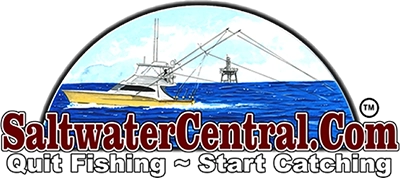NOAA Fisheries to withdraw proposed rule to require turtle excluder devices in certain shrimp trawls
Based on new data collected this summer, NOAA is withdrawing a proposed rule to require turtle excluder devices (TEDs) for skimmer trawls, pusher-head trawls, and wing-net trawls in the southeast shrimp fisheries. NOAA observers collected data that showed the devices may not prevent small sea turtles from being caught in nets as previous data suggested. The proposed rule would have affected 2,600 fishermen, and had not yet taken
effect.
TEDs are very effective at allowing turtles to escape from otter trawl nets operating offshore, but the device may need to be modified to work effectively for the inshore trawl fisheries. Typically, skimmer trawls fish in shallow areas where they tend to encounter smaller, young turtles, while otter trawls fish in both shallow and deeper waters so on average they tend
to encounter larger turtles.
NOAA fishery observers found that turtles captured in skimmer trawls are so small that they are not necessarily able to escape through the TED door. Instead, the smaller turtles can pass through the bars of the TED and get caught inside the end of the net, potentially causing them to drown rather than allowing them to escape as intended. During the observed period, all
of the turtles were released alive with one turtle assumed dead following release due to its behavior on the boat.
“We’re not abandoning this issue, there’s just more work that needs to be done to get it right,” said Dr. Roy Crabtree, southeast regional administrator for NOAA Fisheries. “This is the first time we’ve required observers on skimmer trawls and the information we now have
suggests the conservation benefit does not justify the burden this rule would place on the industry. We need more research looking at different options.”
While TEDs have been required in otter trawls for more than 20 years, fishermen using skimmer trawls, pusher-head trawls, and wing-net trawls are authorized to use tow time limits instead to help prevent incidental catch of turtles. Limiting the amount of time a net is pulled underwater is one way to reduce impacts of shrimp trawls on sea turtles, as most turtles can survive for up to an hour or more underwater. Historically though, compliance with tow times may be low and is hard to enforce–which was one of the reasons for the proposed rule. As part of adopting future science-based management measures, fishery managers will continue to research turtles captured in skimmer trawls and increase outreach to the shrimp
industry, focusing on education and compliance with tow times.
NOAA’s mission is to understand and predict changes in the Earth’s environment, from the depths of the ocean to the surface of the sun, and to conserve and manage our coastal and marine resources.
NOAA Fisheries to withdraw proposed rule to require turtle excluder devices in certain shrimp trawls
Based on new data collected this summer, NOAA is withdrawing a proposed rule to require turtle excluder devices (TEDs) for skimmer trawls, pusher-head trawls, and wing-net trawls in the southeast shrimp fisheries. NOAA observers collected data that showed the devices may not prevent small sea turtles from being caught in nets as previous data suggested. The proposed rule would have affected 2,600 fishermen, and had not yet taken
effect.
TEDs are very effective at allowing turtles to escape from otter trawl nets operating offshore, but the device may need to be modified to work effectively for the inshore trawl fisheries. Typically, skimmer trawls fish in shallow areas where they tend to encounter smaller, young turtles, while otter trawls fish in both shallow and deeper waters so on average they tend
to encounter larger turtles.
NOAA fishery observers found that turtles captured in skimmer trawls are so small that they are not necessarily able to escape through the TED door. Instead, the smaller turtles can pass through the bars of the TED and get caught inside the end of the net, potentially causing them to drown rather than allowing them to escape as intended. During the observed period, all
of the turtles were released alive with one turtle assumed dead following release due to its behavior on the boat.
“We’re not abandoning this issue, there’s just more work that needs to be done to get it right,” said Dr. Roy Crabtree, southeast regional administrator for NOAA Fisheries. “This is the first time we’ve required observers on skimmer trawls and the information we now have
suggests the conservation benefit does not justify the burden this rule would place on the industry. We need more research looking at different options.”
While TEDs have been required in otter trawls for more than 20 years, fishermen using skimmer trawls, pusher-head trawls, and wing-net trawls are authorized to use tow time limits instead to help prevent incidental catch of turtles. Limiting the amount of time a net is pulled underwater is one way to reduce impacts of shrimp trawls on sea turtles, as most turtles can survive for up to an hour or more underwater. Historically though, compliance with tow times may be low and is hard to enforce–which was one of the reasons for the proposed rule. As part of adopting future science-based management measures, fishery managers will continue to research turtles captured in skimmer trawls and increase outreach to the shrimp
industry, focusing on education and compliance with tow times.
NOAA’s mission is to understand and predict changes in the Earth’s environment, from the depths of the ocean to the surface of the sun, and to conserve and manage our coastal and marine resources.

